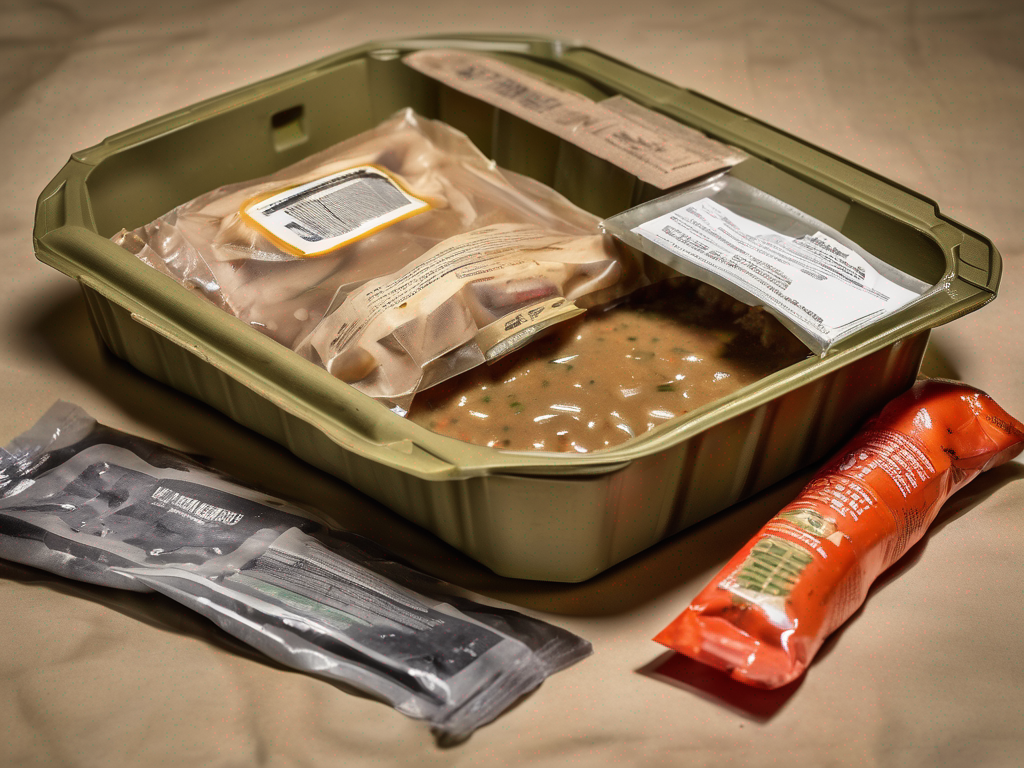
Proper Storage of Military MREs for Emergency Preparedness
Get Your Free Food Safety Cheat Sheet
30 most common foods with instant answers. Print it and stick it on your fridge—completely free!
Proper Storage of Military MREs for Emergency Preparedness
In times of crisis or emergency situations, having a supply of military MREs (Meal Ready to Eat) can be a crucial part of your emergency preparedness plan. These self-contained, ready-to-eat meals are designed to provide nutrition and sustenance in challenging conditions. Properly storing MREs is essential to maintain their quality, taste, and safety for when you need them most. In this guide, we will discuss the best practices for storing military MREs to ensure they remain safe and effective during emergencies. (Military mre meal ready to eat)
Importance of Proper MRE Storage
Proper storage of military MREs is important for several reasons:
-
Maintaining Nutritional Value: Proper storage helps preserve the nutritional content of the meals, ensuring they provide the necessary energy and nutrients during emergencies.
-
Ensuring Safety: Improper storage can lead to the growth of harmful bacteria, potentially causing foodborne illnesses and compromising your health during critical times.
-
Prolonging Shelf Life: By storing MREs correctly, you can extend their shelf life and ensure they remain safe to consume for an extended period.
Best Practices for Storing Military MREs
1. Choose an Appropriate Storage Location
-
Cool and Dry: Store MREs in a cool, dry place away from direct sunlight and moisture. High temperatures can degrade the quality of the food and reduce its shelf life.
-
Well-Ventilated: Ensure the storage area is well-ventilated to prevent the buildup of humidity, which can lead to mold growth and spoilage.
-
Protected from Pests: Keep MREs in sealed containers or storage bins to protect them from pests such as rodents and insects.
2. Rotate Your Stock Regularly
-
First In, First Out (FIFO): Practice FIFO rotation to ensure older MREs are used first, allowing you to constantly replenish your supply with fresh ones.
-
Check Expiration Dates: Regularly inspect the expiration dates on your MREs and replace any that are nearing expiration to maintain a fresh supply.
3. Store MREs Properly
-
Avoid Extreme Temperatures: Keep MREs away from extreme heat or cold, as temperature fluctuations can affect the quality and safety of the food.
-
Do Not Freeze: While MREs can withstand freezing temperatures, repeated freezing and thawing can impact the taste and texture of the meals.
4. Monitor and Inspect Regularly
-
Check for Damage: Inspect MRE packaging for any signs of damage, such as tears, punctures, or leaks. Damaged packaging can compromise the safety and shelf life of the meals.
-
Monitor Storage Conditions: Keep track of the temperature and humidity levels in the storage area to ensure they remain within the recommended range for storing MREs.
5. Be Prepared for Emergencies
-
Emergency Kit: Include a supply of MREs as part of your emergency kit, along with other essential items such as water, first aid supplies, and communication devices.
-
Emergency Plan: Develop an emergency plan that outlines how and when to use your MREs, taking into account the nutritional needs of all members of your household.
Conclusion
Proper storage of military MREs is essential for maintaining their quality, safety, and effectiveness during emergencies. By following the best practices outlined in this guide, you can ensure that your supply of MREs remains reliable and ready to use when needed. Remember to regularly inspect and rotate your stock, store MREs in a cool, dry place, and be prepared for any unforeseen circumstances that may arise. With these tips, you can rest assured that your emergency food supply is in good hands. Stay safe and prepared! (Military mre meal ready to eat)
Authoritative Food Safety References
These agencies and university labs inform every tip and health precaution we publish.
USDA FoodKeeper – Cold Storage Guidelines
Official refrigerator, freezer, and pantry timelines maintained by the U.S. Department of Agriculture.
Visit USDA FoodKeeperFDA Produce Safety Rule & Grower Guidance
Field-to-fridge handling practices that prevent contamination of fruits, vegetables, and leafy greens.
Visit FDA Produce SafetyCDC Foodborne Illness Prevention Hub
Surveillance-backed guidance on pathogens, symptoms, and steps to reduce foodborne illness risk.
Visit CDC Food SafetyUC Davis Postharvest Technology Center
University research detailing optimal storage atmospheres for produce after harvest.
Visit UC Davis PostharvestPenn State Extension – Home Food Preservation & Safety
Peer-reviewed extension bulletins on safe canning, chilling, and reheating practices.
Visit Penn State ExtensionGet Your Free Food Safety Cheat Sheet
30 most common foods with instant answers. Print it and stick it on your fridge—completely free! Want more? Upgrade to the complete guide with 70+ foods.
Scan your food directly and get instant safety info using our AI-powered camera feature.